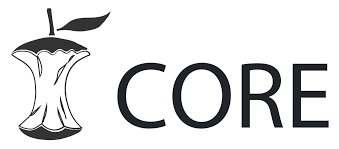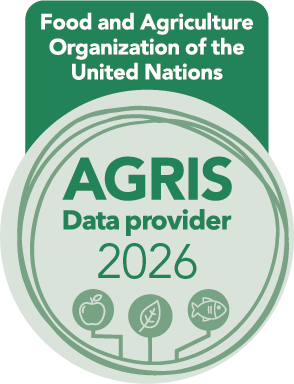El género Pogostemon (Lamiaceae) en Cuba
DOI:
https://doi.org/10.5281/zenodo.10027139Keywords:
Cuban flora, medicinal plants, exotic plants, cultivated plants, patchouliAbstract
Contexto: Sobre la presencia en Cuba de taxones pertenecientes a Pogostemon Desf. (Lamiaceae), género, nativo de África, Asia y Australia, la información previa no resultaba suficientemente precisa.
Objetivos: Informar de la relocalización de una especie perteneciente al género, precisar su nomenclatura, aportar datos que permitan identificarlo y argumentar su utilidad.
Métodos: Estudio de especímenes de herbario, exploraciones de campo, así como la comparación de muestras con descripciones, claves analíticas y ejemplares incorporados a colecciones científicas.
Resultados: Se confirma la presencia en el territorio nacional de Pogostemon cablin (Blanco) Benth. (Lamiaceae), cultivado en las provincias de Sancti Spíritus, Camagüey, Holguín y Guantánamo. Se trata de una especie promisoria, dada su importancia medicinal y para las industrias farmacéutica, de la perfumería y de la cosmetología.
Conclusiones: Se elevan a 34 los representantes infragenéricos conocidos de Lamiaceae en el archipiélago cubano que son de origen exótico, 25 los cuales no han llegado a naturalizarse.
Downloads
References
Acevedo-Rodríguez, P., & Strong M. (2012). Catalogue of seed plants of the West Indies. Smithsonian Contributions to Botany. Nº 98. Washington, D.C. Recuperado el 10 de septiembre de 2018, de: https://www.researchgate.net/publication/ 263661734_Catalogue_of_Seed_Plants_of_the_West_Indies
Bin, J., Wei, D., Zhong, S., Hui, J., Cui, Y., Yan, J., et al. (2013). Immunomodulatory potential of patchouli alcohol isolated from Pogostemon cablin (Blanco) Benth (Lamiaceae) in mice. Tropical Journal of Pharmaceutical Research. 12 (4), 559-565, doi: http://dx.doi.org/10.4314/tjpr.v12i4.18 Recuperado el 10 de noviembre de 2018, de: https://www.ajol.info/index.php/tjpr/article/view/93275
Biodiversity Heritage Library Consortium. (s.f.). Biodiversity Heritage Library. Recuperado el 10 de septiembre de 2018, de: https://www.biodiversitylibrary.org
Bunrathep, S., Brian, G., Songsakc, T., & Ruangrungsia, N. (2006). Chemical constituents from leaves and cell cultures of Pogostemon cablin and use of precursor feeding to improve patchouli alcohol level. Science Asia 32, 293-296, doi: https://10.2306/scienceasia1513-1874.2006.32.293. Recuperado el 10 de septiembre de 2018, de: http://www.scienceasia.org/2006.32.n3/293.php
Chen, Y., Wu, Y., Xu, Y., Zhang J., Song, X., Zhu, et al. (2014). Dynamic accumulation of sesquiterpenes in essential oil of Pogostemon cablin. Revista Brasileira de Farmacognoscia 24, 626-634. Recuperado el 10 de septiembre de 2018, de: https://www.sciencedirect.com/science/article/pii/S0102695X15000034
Dharmadasa, R., Rathnayake, R., Abeysinghe, D., Rashani, S., Samarasinghe, K., & Attanayake, A. (2014). Screening of local and introduced varieties of Pogostemon heyneanus Benth. (Lamiaceae), for superior quality physical, chemical and biological parameters. World Journal of Agricultural Research, 2(6), 261-266, doi: https://10.12691/wjar-2-6-2. Recuperado el 10 de septiembre de 2018, de: http://pubs.sciepub.com/wjar/2/6/2/index.html
Dechayont, B., Ruamdee, P., Poonnaimuang, S., Mokmued, K., & Chunthorng-Orn, J. (2017). Antioxidant and antimicrobial activities of Pogostemon cablin (Blanco) Benth. Hindawi Journal of Botany. Article ID 8310275, doi: https://doi.org/10.1155/2017/8310275. Recuperado el 10 de septiembre de 2018, de: https://www.hindawi.com/journals/jb/2017/8310275
Esquivel, M. A., Hammer, K., & Knüpffer, H. (1992). Inventory of the Cultivated Plants. En K. Hammer, M. Esquivel & H. Knüpffer (eds.). “... y tienen faxones y fabas muy diversos de los nuestros...”. Origin, Evolution and Diversity of Cuban Plant Genetic Resources. (Vol. 2, pp. 213-454). Gatersleben, Germany: Institut für Pflanzengenetik und Kulturpflanzeforschung.
Font Quer, P. (1975). Diccionario de Botánica. (5ta. ed.). Madrid: Editorial Labor, S. A.
Greuter, W., & Rankin R. (2017). Espermatófitos de Cuba Inventario preliminar. Parte II: Inventario. Botanischer Garten und Botanisches Museum Berlin-Dahlem. Zentraleinrichtung der Freien Universität Berlin. Königin-Luise-Str. 6-8, D-14195 Berlin, Germany, doi: http://dx.doi.org/10.3372/cubalist.2016.2
Harley, R., Atkin, S., Budantsev, A., Cantino, P., Conn, R., Grayer, R., et al. (2004). Lamiales (except Acanthaceae including Avicenniaceae). En The families and genera of vascular plants. Flowering plants, Dicotyledons [K. Kubitzki ed.]. Berlin: Springuer.
He, Y., Wan, F., Xiong, L., Li, D., & Peng, Ch. (2014). Identification of two chemotypes of Pogostemon cablin (Blanco) Benth. through DNA barcodes. Z. Naturforsch, 69c, 253 – 258, doi: https://10.5560/ZNC.2013-0180. Recuperado el 10 de septiembre de 2018, de: https://www.ncbi.nlm.nih.gov/pubmed/25069164
Hooker, W. (1849). Journal of Botany and Kew Garden Miscellany. (Vol. I). London: Reeve, Benham & Reeve.
Ingrouille, M., & Raza, G. (1998). Infrageneric relationships within Pogostemon Desf. (Labiatae). Botanical Journal of the Linnean Society, 128, 159-183. Recuperado el 10 de septiembre de 2018, de: https://academic.oup.com/botlinnean/article/128/2/159/2557274
Jin, H., Deng, Z., & He, H. (2014). Effect of explant types and plant growth regulators on direct regeneration in medicinal plant Pogostemon cablin. Plant Omic Journals, 7(5), 322-327. Recuperado el 10 de septiembre de 2018, de: https://search.informit.com.au/documentSummary;dn=725857211503385;res=IELHSS
Journal Storage. (s.f.). Jstor Global Plants. Recuperado el 12 de noviembre de 2018, de: https://plants.jstor.org/search?plantName=%22Pogostemon+cablin%22&syn=1
Karimi, A. (2014). Characterization and antimicrobial activity of patchouli essential oil extracted from Pogostemon cablin [Blanco] Benth. [Lamiaceae]. Advances in Environmental Biology, 8(7), 2301-2309. Recuperado el 10 de septiembre de 2018, de: https://www.researchgate.net/publication/287306407_Characterization_and_antimicrobial_activity_of_Patchouli_essential_oil_extracted_from_Pogostemon_cablin_Blanco_Benth_lamiaceae
Kongkathip, N., Sam-ang, P., Kongkathip, B., Pankaew, Y., Tanasombat, M., & Udomkusonsri, P. (2009). Development of patchouli extraction with quality control and isolation of active compounds with antibacterial activity. Kasetsart Journal (Natural Science), 43, 519 – 525. Recuperado el 12 de septiembre de 2018, de: https://www.researchgate.net/publication/283873802_Development_of_patchouli_extraction_with_quality_control_and_isolation_of_active_compounds_with_antibacterial_activity
Kumara, M., Balasubramanya, S., & Anuradha, M. (2009). Germplasm conservation of patchouli (Pogostemon cablin Benth.) by encapsulation of in vitro derived nodal segments. International Journal of Biodiversity and Conservation, 1(8), 224-230. Recuperado el 12 de septiembre de 2018, de: https://www.academia.edu/4613384/Germplasm_conservation_of_patchouli_Pogostemon_cablin_Benth._by_encapsulation_of_in_vitro_derived_nodal_segments
Kumara, M., Balasubramanya, S., & Anuradha, M. (2010). In vitro multiplication of Pogostemon cablin Benth. through direct regeneration. African Journal of Biotechnology, 9(14), 2069-2075, doi: https://10.5897/AJB09.1580. Recuperado el 12 de septiembre de 2018, de: http://www.academicjournals.org/AJB
Kumara, M., & Rani, U. (2016). Patchouli (Pogostemon cablin Benth.): Botany, agrotechnology and biotechnological aspects. Industrial Crops and Products, 87, 161–176. Recuperado el 10 de marzo de 2018, de: https://www.sciencedirect.com/science/article/pii/S0926669016302485n
Li, F., Li, Ch., Ma, J., Yang, J., Chen, H., Liu, X. et al. (2013). Four new sesquiterpenes from the stems of Pogostemon cablin. Fitoterapia, 86, 183–187. Recuperado el 10 de septiembre de 2018, de: https://www.sciencedirect.com/science/article/pii/S0367326X13000671
Missouri Botanical Garden Library. (s.f.). Botanicus Digital Library. Recuperado el 15 de septiembre de 2018, de: http://www.botanicus.org/page/160380
Muséum National d'Histoire Naturelle. (s.f.). P Virtual Herbarium. Recuperado el 10 de septiembre de 2018, de: https://plants.jstor.org/stable/10.5555/al.ap. specimen.p03012097?searchUri=nplantName%3D%2522Pogostemon%2Bcablin%2522%26syn%3D1
Patil, S., Nayack, G., Barve, S., Tembe, R., & Khan, R. (2012). Impact of biofield treatment on growth and anatomical characteristics of Pogostemosn cablin (Benth). Biotechnology, 11(3), 154.162, doi: 10.3923/biotech.2012.154.162. Recuperado el 10 de septiembre de 2018, de: https://www.researchgate.net/publication/280621941_Impact_of_Biofield_Treatment_on_Growth_and_Anatomical_Characteristics_of_Pogostemon_cablin_Benth
Qing, Z., Li, X., Jia, M., Wen, Ch., Zhi S., Ren, Z., et al. (2014). Isolation of (-)-patchouli alcohol from patchouli oil by fractional distillation and crystallization. Tropical Journal of Pharmaceutical Research, 13 (3), 359-363, doi: http://dx.doi.org/10.4314/tjpr.v13i3.7. Recuperado el 10 de septiembre de 2018, de: https://www.ajol.info/index.php/tjpr/article/view/103730
Ramya, H., Palanimuthu, V., & Rachna, S. (2013). An introduction to patchouli (Pogostemon cablin Benth.) – A medicinal and aromatic plant: It’s importance to mankind. Agricultural Engineering International: CIGR Journal, 15(2), 243-250. Recuperado 24 de noviembre de 2018, de: http://www.cigrjournal.org/index.php/Ejounral/article/view/2289
Roig, J. (1965). Diccionario botánico de nombres vulgares cubanos. (2 vols.). La Habana: Editora del Consejo Nacional de Universidades.
Roig, J. (1974). Plantas medicinales, aromáticas o venenosas de Cuba. (2ª ed.). La Habana: Ciencia y Técnica.
Royal Botanic Gardens. (s.f.). K Virtual Herbarium. Recuperado el 10 de septiembre de 2018, de: https://plants.jstor.org/stable/10.5555/al.ap.specimen.k000824877?searchUri=plantName%3D%2522Pogostemon%2Bcablin%2522%26syn%3D1
Sandes, S., Pinheiro, J., Zucchi, M., Monteiro, M., Arrigoni-Blank, M., & Blank, A. (2010). Development and characterization of microsatellite primers in Pogostemon cablin (Lamiaceae). Genetics and Molecular Research, 12 (3), 2837-2840. Recuperado el 10 de septiembre de 2018, de: https://www.geneticsmr.org/abstract/development-and-characterization-of-microsatellite-primers-in-pogostemon-cablin-lamiaceae-1868.html
Sharma, P., & Sarma, J. (2015). Pogostemon cablin (Blanco) Benth. (Lamiaceae): It’s Ethnobotany & in vitro regeneration. Pharmacognosy Journal, 7(3), 152-156, doi: https://10.5530/pj.2015.3.2. Recuperado el 10 de septiembre de 2018, de: https://www.phcogj.com/article/44
Sukardi, Soeparman, S., Argo, B., & Irawan, S. (2017). Optimization of patchouli oil (Pogostemon cablin Benth.) with steam distillation assisted by pulsed electric field via response surface methodology. Journal of Engineering Science and Technology, 12 (8), 2106 – 2119. Recuperado el 10 de septiembre de 2018, de: https://www.researchgate.net/publication/319179756_Optimization_of_patchouli_oil_Pogostemon_cablin_benth_with_steam_distillation_assisted_by_pulsed_electric_field_via_response_surface_methodology
The Natural History Museum. (s.f.). BM Virtual Herbarium. Recuperado el 10 de noviembre de 2018, de: https://plants.jstor.org/stable/10.5555/al.ap. specimen.bm000950346?searchUri=plantName%3D%2522Pogostemon%2Bcablin%2522%26syn%3D1
Thiers, B. (2019). Index Herbariorum: A global directory of public herbaria and associated staff. New York Botanical Garden's Virtual Herbarium. Recuperado el 10 de septiembre de 2018 de: http://sweetgum.nybg.org/science/ih
Turland, N., Wiersema, J., Barrie, F., Greuter, W., Hawksworth, D., Herendeen, A., et al. (eds.) (2018). International Code of Nomenclature for algae, fungi, and plants (Shenzhen Code) adopted by the Nineteenth International Botanical Congress Shenzhen, China, July 2017. Regnum Vegetabile 159. Koeltz Botanical Books. Glashütten, doi: https://doi.org/10.12705/Code.2018
Yao, G., Deng, Y., & Ge, J. (2015). A taxonomic revision of Pogostemon (Lamiaceae) from China. Phytotaxa, 200 (1), 1-67. http://dx.doi.org/10.11646/phytotaxa.200.1. Recuperado el 10 de septiembre de 2018, de: https://biotaxa.org/Phytotaxa/article/view/phytotaxa.200.1.1
Downloads
Published
Issue
Section
License
Copyright (c) 2019 Isidro E. Méndez Santos, Rayner Morales Pérez

This work is licensed under a Creative Commons Attribution-NonCommercial-NoDerivatives 4.0 International License.
You are free to:
- Share — copy and redistribute the material in any medium or format
- The licensor cannot revoke these freedoms as long as you follow the license terms.
Under the following terms:
- Attribution — You must give appropriate credit , provide a link to the license, and indicate if changes were made . You may do so in any reasonable manner, but not in any way that suggests the licensor endorses you or your use.
- NonCommercial — You may not use the material for commercial purposes .
- NoDerivatives — If you remix, transform, or build upon the material, you may not distribute the modified material.
- No additional restrictions — You may not apply legal terms or technological measures that legally restrict others from doing anything the license permits.






